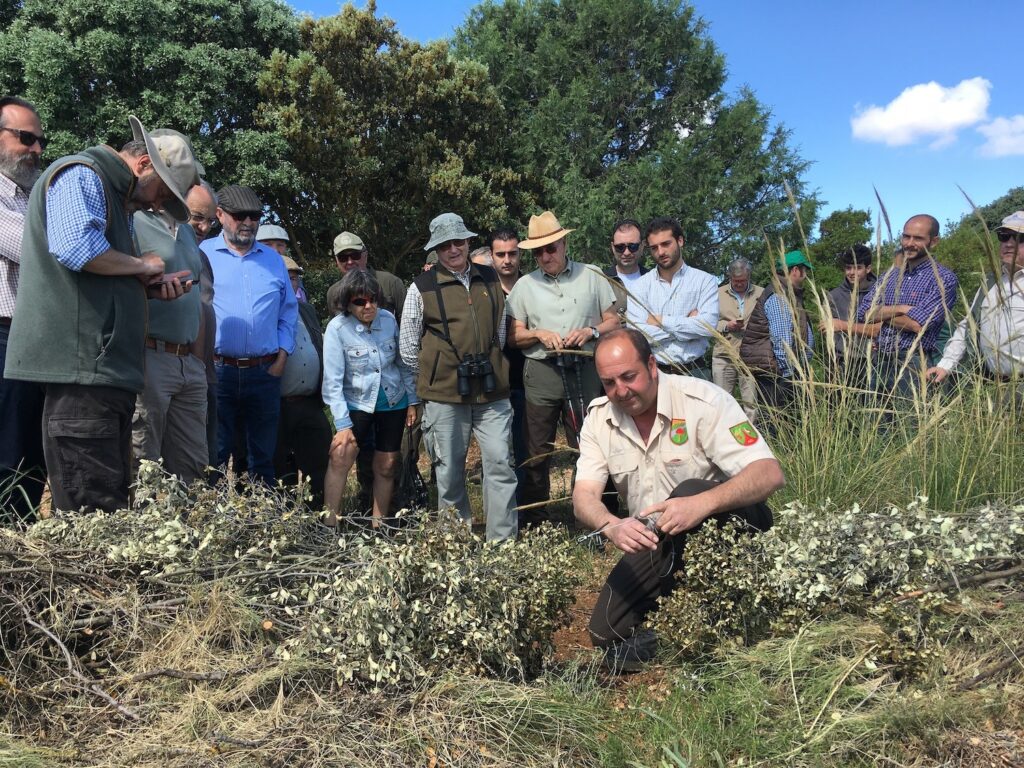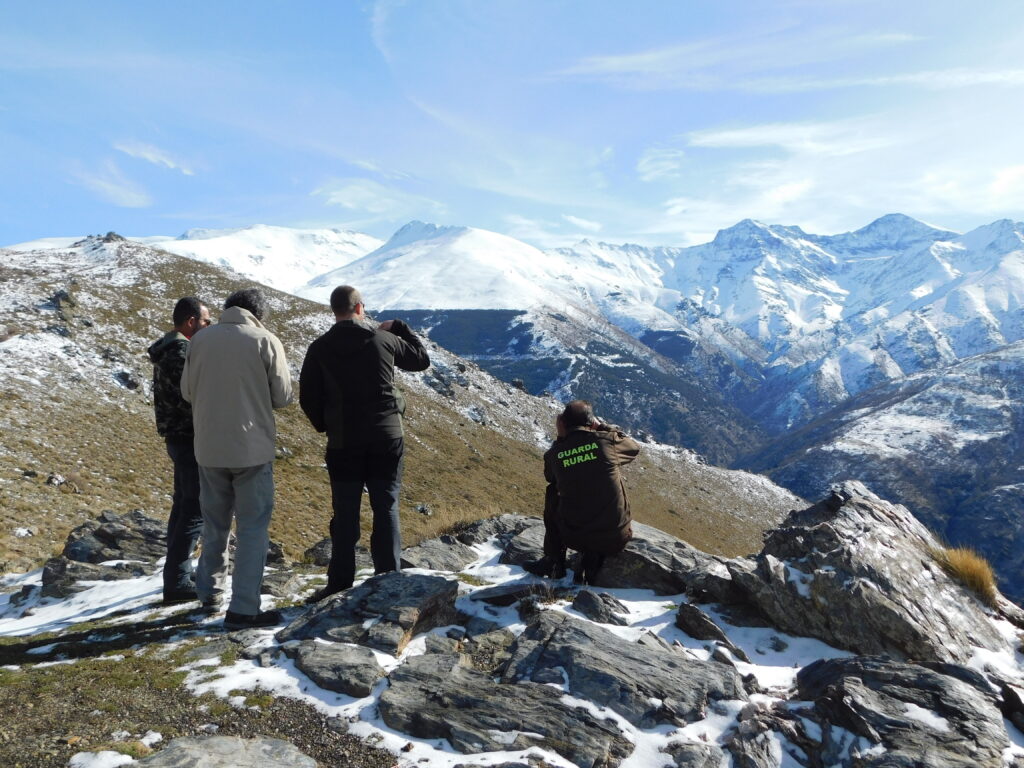Carlos Sánchez is working on a nationwide project to restore Spain’s native partridges

Spanish redleg partridge populations have fallen by a third in the last 20 years due to habitat loss, changes in farming practices, predation, overshooting and in some cases owing to the large-scale release of captive-bred birds. In 2018, after seeing the success of land-manager led conservation in the UK, ecologist Carlos Sánchez, research director at the conservation organisation Fundación Artemisan, was inspired to establish a wild partridge project to reverse this trend. Fundación Artemisan and several hunters’ federations established seven pilot initiatives in regions where partridge used to be numerous including Andalucía, Aragón, Castilla-La Mancha, Extremadura, Valencia, Madrid and the Basque Country.
Project profile
- Location: Andalucía, Aragón, Castilla-La Mancha, Extremadura, Valencia and the Basque Country, Spain
- Type of landscape: Mostly arable farmland but also olive groves and vineyards as well as non-productive scrubland and mountainous areas
- Acreage: 8,640 acres
- Funding: Agri-environment grants funded by Fundación Artemisan with some help from regional governments
- Conservation measures: Beetle banks, grass margins, cover crops, predation management, supplementary feeding, water provision
The project, named ‘RUFA’ after the Latin name for the bird, draws on the enthusiasm of local land managers who are encouraged to form their own conservation committees. Carlos explained: “The farmers and hunters make the decisions. We give advice but ultimately they decide, it is similar to the Game & Wildlife Conservation Trust’s (GWCT) Farmer Clusters in England. Normally, it’s one or two key people driving the project with sufficient charisma, enthusiasm and local influence. In each location, we have had no difficulty finding such individuals and they make all the difference.”
Each site is about 500 hectares with terrain ranging from arid mountains to low-lying farmland. In the hills, work parties are restoring the scrubland favoured by the birds, and in lowland areas farmers have been encouraged to create habitat in field margins such as new hedgerows, grass strips and beetle banks. Artemisan is funding these measures through agri-environment grants and helping landowners with the application process. Carlos said: “Farmers fear that signing up to a scheme will mean inspections, fines or losing an area payment on a piece of land. We reassure them and take care of the paperwork. It’s not so much about the money for many of them and they don’t mind a few weeds, but a love of the countryside or belonging to the traditional hunting culture is essential.”
As ground-nesting birds, redlegs are particularly vulnerable to predation, and the hunters volunteer their time to carry out targeted fox and corvid control during the breeding season. Some regions allow foxes and magpies to be controlled with shotguns but prohibit the use of trapping. Unlike in the UK, stoats, weasels and polecats, which predate on partridge eggs and young, are protected in Spain, but Fundación Artemisan is working to get special licences to control them. The impact of these regional variations will be assessed by monitoring wild bird productivity in the different sites. Carlos said: “Providing the right habitat definitely plays a part in reducing predation pressure, but it’s a fairytale to say it’s all that is needed for wildlife to thrive. Sadly, we are one of the only bodies in Spain willing to make the case for lethal control of predators as part of the conservation package.”
The redleg is an umbrella under which our aim is to see the restoration of other threatened species
Carlos Sánchez
This three-legged stool approach i.e. providing breeding habitat, food/water and predator control, benefits a wide range of wildlife besides partridges. Carlos said: “The redleg partridge is an umbrella under which our aim is to see the restoration of many other threatened species including little bustards, great bustards, eagles, waders, songbirds and Iberian hares. For example, one of our youngest farmers in the Basque Country is very proud of how well farmland birds, waders and hares are doing on his land.”
To avoid damaging the wild population, none of the sites in the project release reared partridges. Research shows that on land with two to three pairs of wild birds per km2, it is possible to increase numbers dramatically within four years by creating suitable habitat and relieving predation pressure. Carlos said: “In Spain, releasing is both part of the problem and part of the solution as far as conservation is concerned. We are not happy with reckless releasing, which has taken place during the last decades and in some contexts damages wild stock by accidental shooting and interbreeding. On the other side of the coin, in recent decades, game farms and estates have made great efforts to reduce problems related to hybridization and disease. By funding predator control, food and water for the released partridges, they help a host of other wild species including great and little bustards. In addition, game management preserves land that might otherwise be lost to farming or development and provides local employment in isolated
rural areas.”

Previously, large commercial shoots were blamed for the illegal killing of protected species. However, in recent years, research has shown that the shoots contribute to the conservation of a wide range of species, and wildlife crime has dramatically reduced in certain regions. This may be partly to do with new legal methods to control generalist predators and the fact that some regional governments now compensate shoots for partridges and rabbits killed by protected species. Importantly, gamekeepers are realising that top predators can actually help balance numbers of foxes and smaller birds of prey. Carlos said: “Here in southern Spain, we have the last strongholds of the highly endangered Iberian lynx and golden and imperial eagle, all of which benefit from the abundance of prey on shoots with large-scale releasing. At the same time, the big shoots recognise that apex predators can reduce the number of smaller predators and so protect the partridges.”
As well as the RUFA project, in February 2021, Fundación Artemisan launched a website for farmers and hunters from across Spain to log sightings of wildlife in their local area. Reporting wildlife counts is made easier by means of an app connected to a central online mapping tool and website. People can check their own data whenever they like, but all information on the site is confidential. Carlos explained: “This is great citizen science and will show how seriously hunters take wildlife conservation. We started at the beginning of the year and the response from the hunting community has been very positive; we even have participants in the Canary Islands reporting on migrating birds.” Carlos is hopeful that both the monitoring network and the partridge conservation project, which is in its first year, will continue for the next ten years and see redlegs and other species restored in those regions where they are currently under threat.
